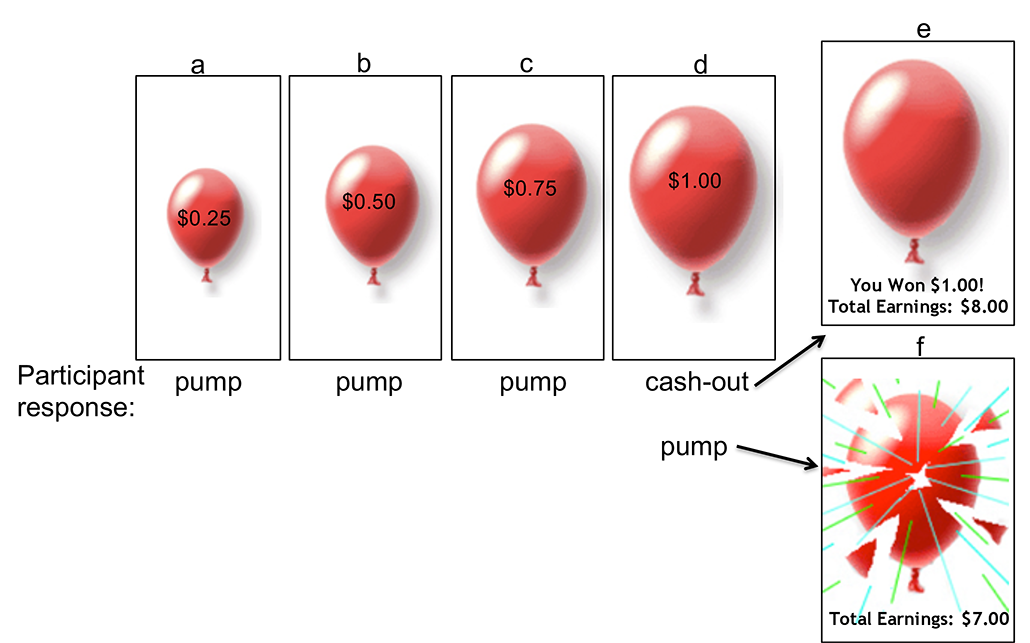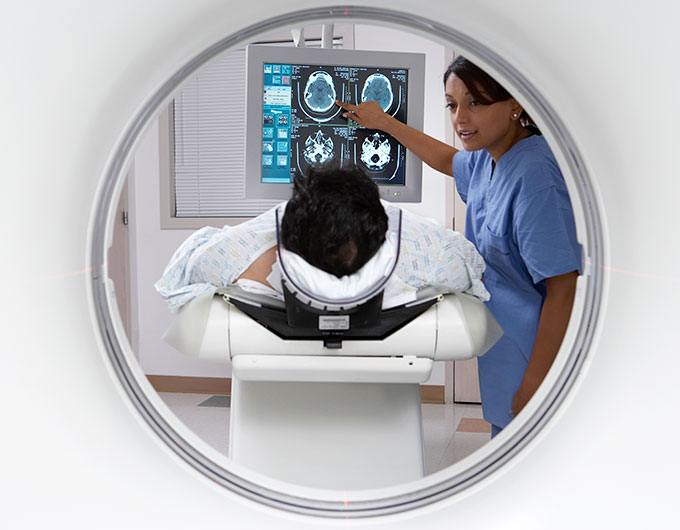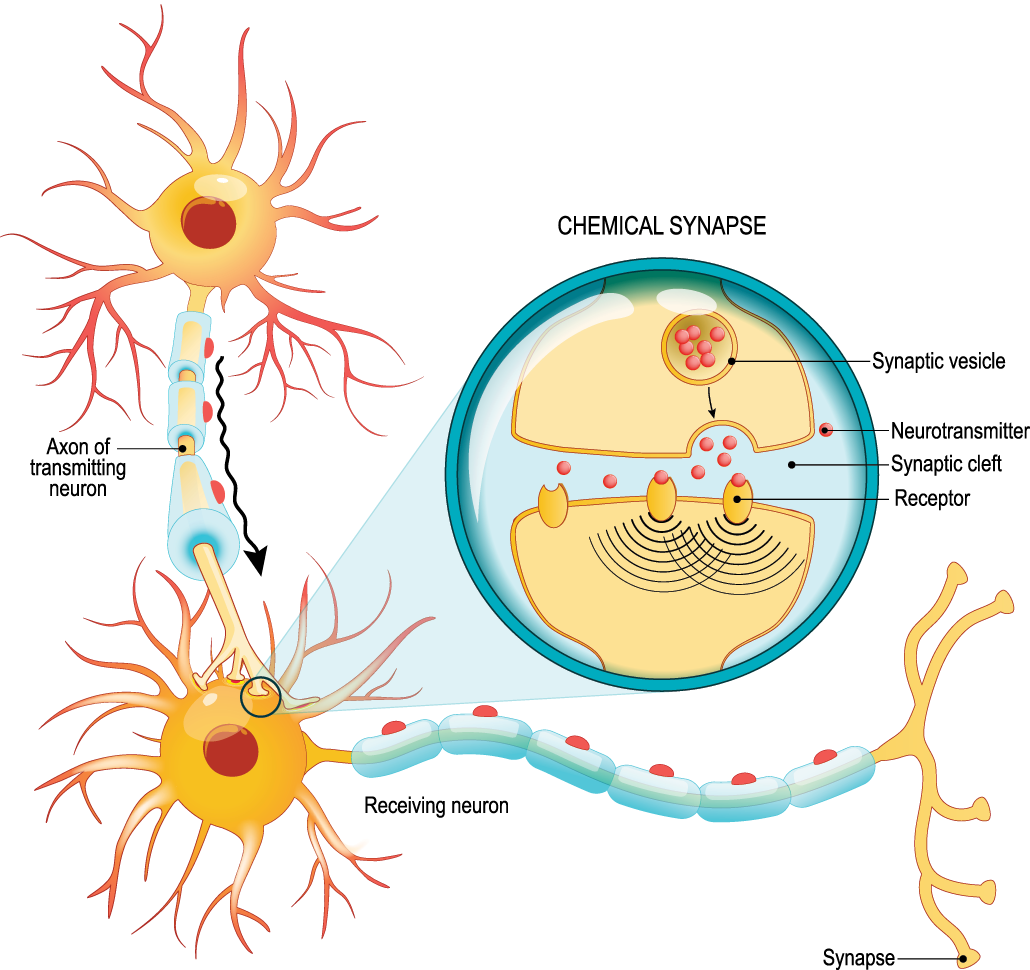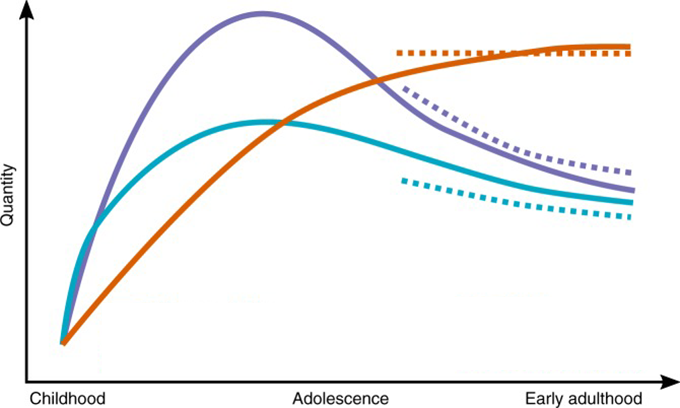Search for ‘rewards’ is big driver in remodeling a teen’s brain
One communicator molecule, dopamine, plays an oversized role here

Teenagers may take bigger risks than younger children and adults. Changes in their brains help explain this behavior.
GibsonPicturesDaveLongMedia/E+/Getty Images Plus
A limp red balloon floats on the computer screen before you. Clicking your mouse inflates it. The bigger it is when you stop, the more money you earn. But if it pops before you stop, you get nothing.
Anna van Duijvenvoorde is a psychologist at Leiden University in the Netherlands. Her team uses computer games like this to measure how cautious or impulsive people are.
Teens tend to pop the balloons more often than do children or adults. That’s especially true when their friends are watching, says van Duijvenvoorde. Teens simply tend to take more risks, whether it’s to earn money or social status. (In the balloon game, greater risk-taking actually earns bigger rewards, on average.)

Her team scans the brains of young recruits as they play the game. A tunnel-like fMRI machine they use measures oxygen in their blood. Its images show oxygen-rich brain regions, which are more active.
During the game, an area deep inside the midbrain lights up more brightly in teens than in kids or adults. It is part of the striatum (Stry-AY-tum). One job of this region is to regulate our emotional response to rewards. Another active region directly behind the eyes and forehead is the prefrontal cortex. It hosts the executive control center. This area weighs the pros and cons of a decision before we make it.
As a child’s brain begins to morph towards adulthood, these two regions change — but not at the same rate. The prefrontal cortex matures more slowly. Thus, teenagers may ignore the consequences of failure when the reward is emotionally satisfying.
“The teen brain is like a car with a very strong engine,” says van Duijvenvoorde. “Its brakes just don’t work as well.” That’s not always a problem, she notes. But it could cause trouble if the car approaches a stoplight at high speed.

To understand how the brain matures, the researchers invited the same volunteers to the lab at ages 14, 17 and 20. Many recruits popped their balloons less often at 20 than at 14. They became less likely to risk losing all the money for a chance at a bigger reward. And their prefrontal cortex now lit up more brightly.
Biology drives this familiar tendency of teens to take greater risks. In fact, the brain is being rewired at multiple cellular levels throughout adolescence. Understanding teen behavior, therefore, requires also understanding the ways in which many of the brain’s 86 billion neurons change as they prepare for adulthood.
The dope on dopamine
One major type of rewiring involves the brain’s reward system. Dopamine is a major player there. This neurotransmitter relays messages between neurons.
Those brain cells send and receive chemical messages using specialized parts. Branch-like projections from a neuron’s main cell body are called dendrites. These receive messages. At the other end of the neuron, long tail-like axons extend toward other parts of the brain or body. Finger-like projections from the ends of axons release neurotransmitters.
The neurotransmitters cross a narrow gap between cells to carry their message to a neighbor’s dendrites. That spot where chemicals pass from one neuron to another is called a synapse (SIH-napse). This specialized structure is where a message is handed off from one cell to the next.
Dopamine is made by special neurons in the midbrain. They send axons to many other brain regions. There, these axons release dopamine to “talk” to other types of neurons. One trigger for that release is the presence of rewards. The receiving neurons have special docking stations on their dendrites, known as receptors. They are needed to understand the message.
The first dopamine-releasing axons grow from the midbrain to the prefrontal cortex before birth. But the connection doesn’t reach its full power until adulthood. More and more axons join in during childhood and especially in adolescence, making the message stronger. This final developmental push helps explain some unique aspects of teen behavior.
Researchers turn to mice and rats to learn how the dopamine system changes. More tools exist to probe deeper into those rodent brains. The rodents also reach adolescence much quickly than people. That makes it easier to study how chemicals affect their brain cells and behavior.
Neuron communication

Lessons from adolescent mice
From the outside, the brains of a mouse and person look pretty different. Inside, they’re more alike. So are some behaviors. Adolescent mice may not party like human teens, but they do act differently than youngsters and adults.
Lauren Reynolds saw this firsthand as a graduate student in neuroscience at McGill University. That’s in Montreal, Canada. (She now works at Sorbonne University in France.) Reynolds wanted to gauge how well mice could resist their desire to do something. For that, she trained them to do what’s called a go/no-go task.
The “go” cue is a light that turns on inside a box for three seconds. Mice quickly learn they’ll get a chocolate-flavored treat if they poke their nose into the box when the light is on. The “no-go” cue pairs that light and an irritating noise. Keeping their noses out of the box for three seconds at this cue also produces the reward.
Mice therefore need to learn that the light means a treat — unless it’s accompanied by the noise. Then the treat comes from ignoring the light. (Think back to the car analogy. The “go” cue is like pushing the gas. Resisting the light during “no-go” is like hitting the brakes.) The researchers randomly mix up the cues as the mice learn. No treat for any errors!
Researchers already knew that some drugs make it hard for a rodent to respond correctly on this test. But Reynolds found that their age mattered greatly, too.
Giving the drug in early adolescence made it harder to learn the “no-go” task. The “go” performance didn’t change much. This suggests the chemical got in the way of learning that braking response. Giving the drug to adult mice did not affect their response to either cue. That’s likely because adults already had strong braking responses.
The drug disrupted the growth of the dopamine-making neurons in adolescent mice, Reynolds showed. So it’s likely that those neurons help put on the brakes for the “no-go” task. Similarly, in the balloon game, the dopamine system helps resist the allure of earning more money.
“This late maturation of the dopamine system is one reason why the brain is especially sensitive to environmental influences during adolescence,” Reynolds concludes.
Dopamine changes
In rodents (solid lines), dopamine (red) increases through childhood and adolescence and levels off in early adulthood. Two dopamine receptors (light and dark blue) peak in early adolescence and then decrease. From late adolescence, these patterns are similar in people (dashed lines). Data at younger ages cannot be obtained
Dopamine levels in rodents and humans at different stages

Measuring dopamine in people
Dopamine is clearly important during adolescence. So researchers would like to know how and why it is changing in teens. But that’s tricky because measuring the chemical requires radioactive tags. Those cannot be injected into children’s brains. Bart Larsen had an idea for getting around that. He tested the notion while getting his PhD in neuroscience. He worked with Beatriz Luna at the University of Pittsburgh, in Pennsylvania.
The striatum has the most dopamine of any part of the brain. An enzyme is needed to make dopamine work. That enzyme needs iron, which is highly magnetic. An MRI scanner can safely measure that iron in people. Could iron in the striatum indirectly measure dopamine, Larsen wondered?
He tested the idea in adults, who can consent to receive radioactive labeling. He was part of a team that scanned the brains of 80 adults (18 to 30 years old). They measured iron, dopamine and dopamine receptors in the striatum. All volunteers returned for a second scan 18 months later.
Iron and dopamine levels changed in very similar ways during those 18 months. That confirmed a close link between the two chemicals. The link was strongest in the part of the striatum that responds to rewards.
The team also scanned the brains of 70 adolescents (12 to 17 years), measuring iron only. And those iron levels increased with their age.
In rodents, levels of dopamine receptors rise quickly after birth. They peak in early adolescence, then drop to a stable level in adults. Dopamine itself rises more slowly from childhood to adolescence before stabilizing. The adults in Larsen’s study showed similar patterns as the adult mice. So it seems likely that dopamine changes in human teens may be similar to what’s seen in young mice.
“Our study is a promising first step,” says Larsen. “If the link between iron and dopamine in the striatum holds up, it would be quite valuable.” Doctors could measure iron in teens to check if the dopamine system is developing normally. One catch is that iron also has other jobs. For example, it supplies energy to brain cells. So it is not a perfect stand-in for dopamine.
The researchers described their findings last year in Nature Communications.
The brain on puberty
Researchers think puberty may play a role in many of the brain changes that occur during adolescence. These go beyond the dopamine system. For example, the brain’s gray matter — which holds most of the neuron cell bodies — shrinks a bit. (It’s not a loss of brain power. The brain just gets denser as the tissue reorganizes.)
Connections between neurons change, too. Each cell can have lots and lots of synapses. Most synapses form early in life, but some are more active than others. Rarely used synapses get trimmed away. Such a “synaptic pruning” makes the brain more efficient. Most of that pruning happens in adolescence. Other changes during this time also help chemical messages travel faster.
Hormone changes in puberty may affect pruning and other processes. But when puberty starts and how long it lasts varies greatly in people. That makes this life stage extra hard to study. Janice Juraska’s solution: Work with rats. “We can nail puberty to a single day in rats,” this neuroscientist notes. She works at the University of Illinois in Urbana-Champaign.
Juraska found that puberty and synaptic pruning begin on the exact same day in female rats. This suggests the female hormone estradiol may kick off the pruning activity. (The link is slightly weaker in males.) Scientists don’t yet know whether this also is true in people.
Many brain cells have hormone receptors. “Those hormones probably influence the brain in complex ways,” says Kristen Delevich. This neuroscientist works at Washington State University in Pullman. Hormones may help the axons of dopamine-making neurons grow into the prefrontal cortex. Their effect on other types of neurons may be different.
“We have yet to learn a lot about how hormones help the brain mature in rodents, much less people,” says Delevich.

Brain and behavior
The adolescent brain actively undergoes a wholesale change. More axons of dopamine-producing neurons reach the prefrontal cortex. Synapses get pruned. Gray matter reorganizes to help signals travel faster. Pubertal hormones may influence several of these processes.
No wonder all this action affects behavior. Emotions now will often influence decisions more than logic does. Peers may begin to matter more than parents. But as the dopamine system matures, so does the ability to resist the allure of instant rewards.
The downside of all this change? Organs, including the brain, are most vulnerable as they develop. Adolescence brings an increased risk of mental-health disorders. These include depression and schizophrenia. Indeed, teenage depression, too, tends to be linked to how the brain processes rewards. Risk-taking may include trying alcohol, nicotine or illegal drugs. Reynolds notes that “substance use at this age is a strong predictor of addiction later in life.”
Mental-health risks differ in girls and boys — as do pubertal hormones. “Girls develop depression at a greater rate, especially in early adolescence,” Juraska points out. “Schizophrenia tends to start earlier and become more severe in boys.” She thinks puberty may contribute to this sex-specific vulnerability.
But adolescence also is a window of opportunity. And that upside outweighs the downside. Positive experiences can have a long-lasting impact. Healthy risk-taking helps teens explore the world on their path to independence.
“Changes in the adolescent brain shape the person we eventually become,” says van Duijvenvoorde. “I can’t imagine not being fascinated by that.”







